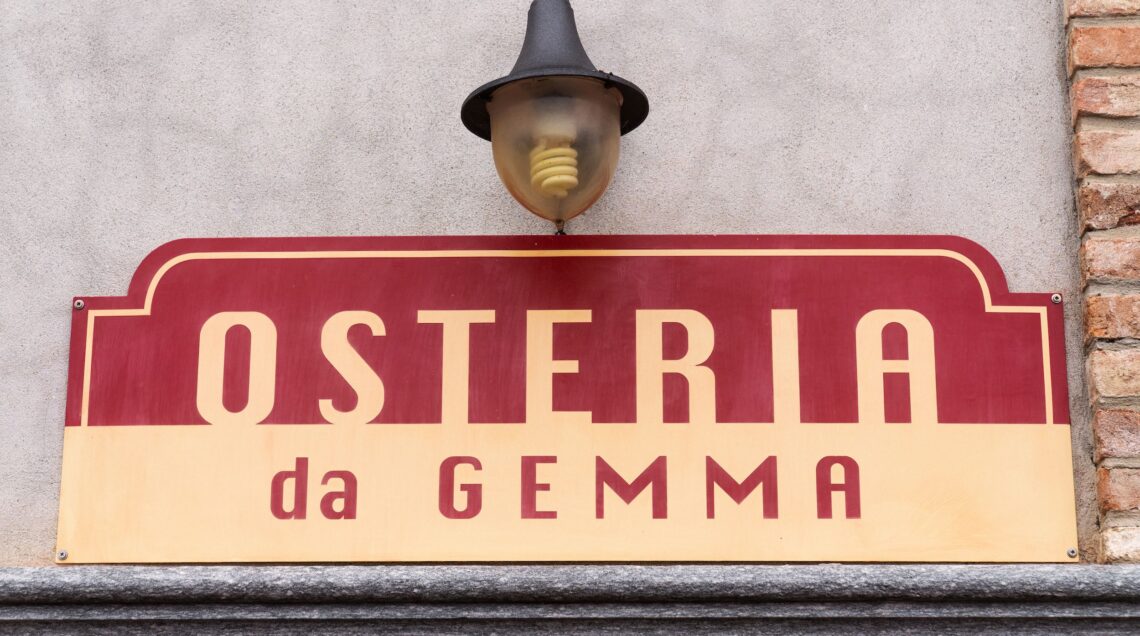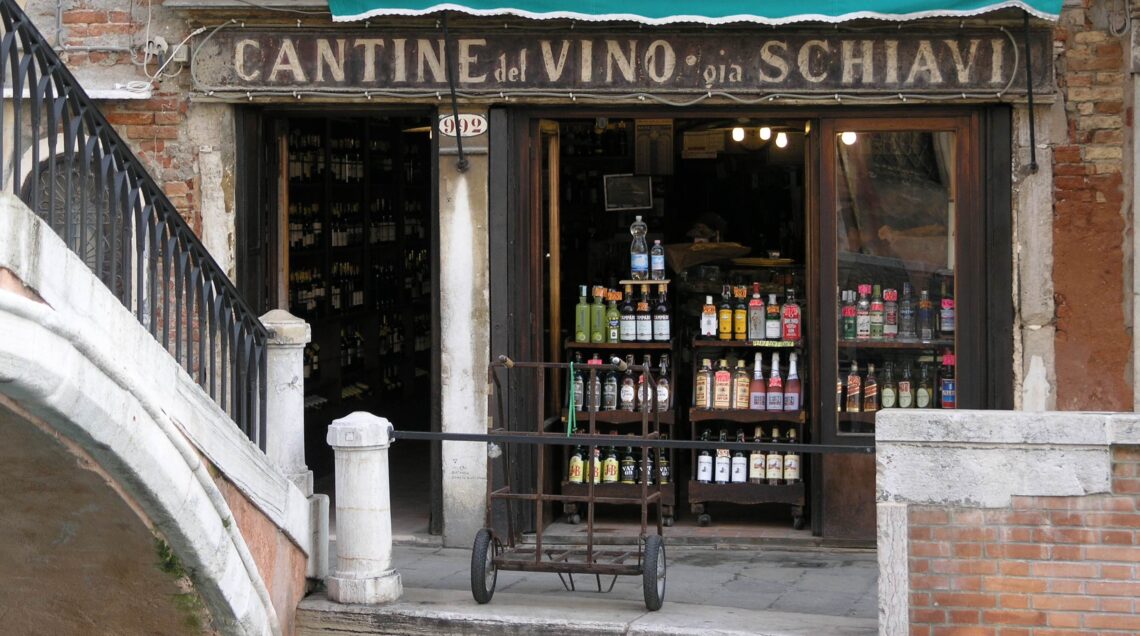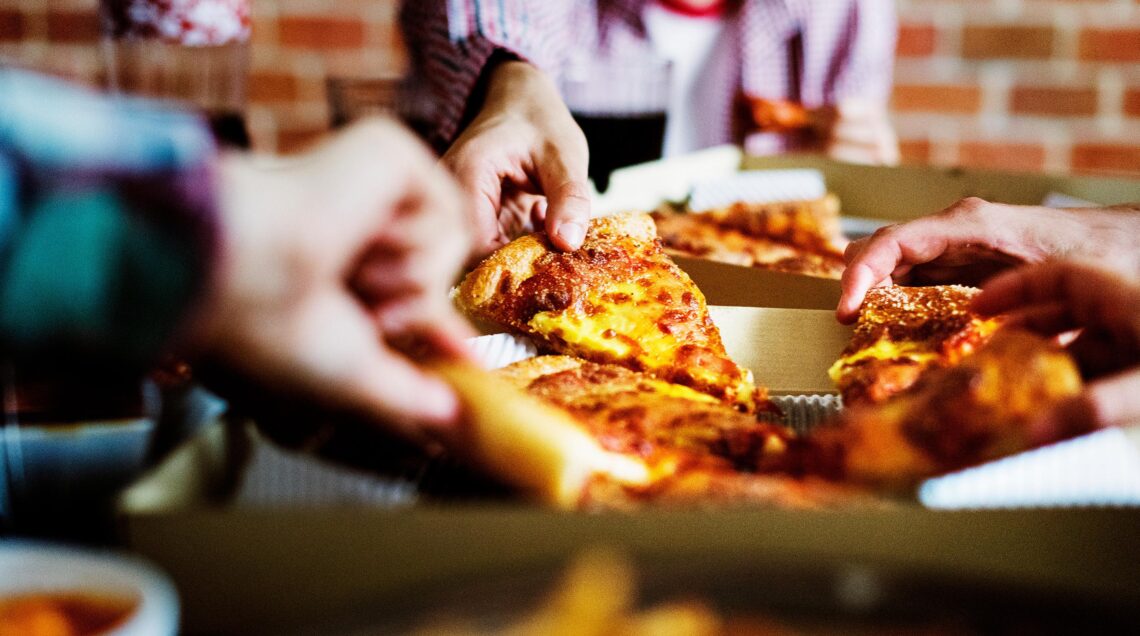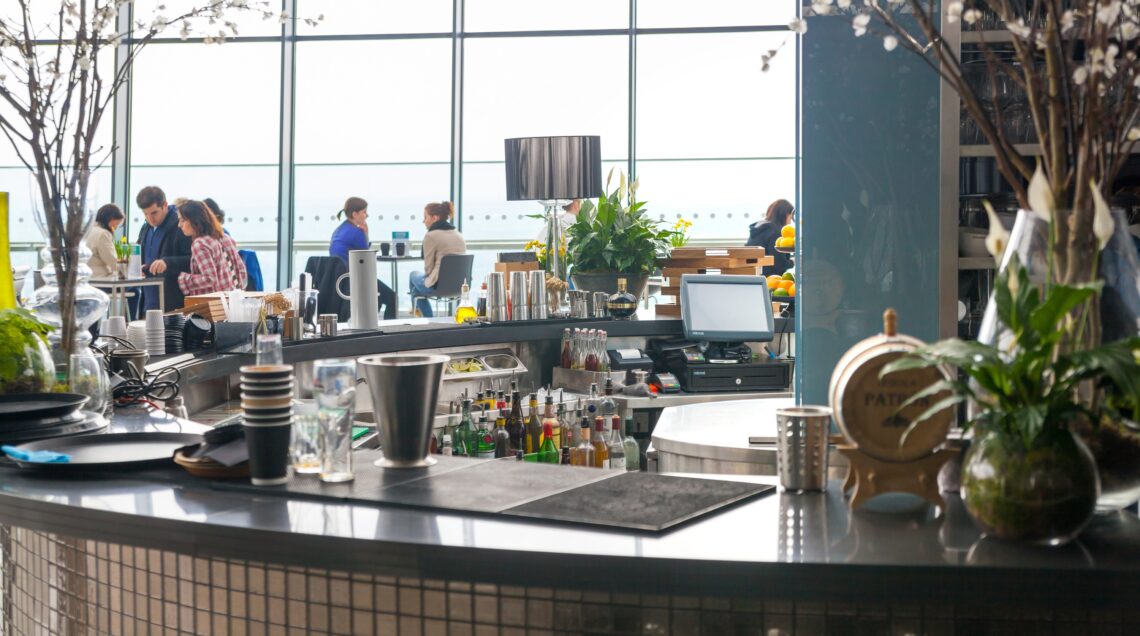Everybody knows how good Italian cooking is, and the names of its more famous and beloved dishes. But do you know all the variations on words for places to eat in Italy? Una panoramica tutta turistica dei luoghi del food italiani


EN
In Italian, “trattore” is the word for an innkeeper or restaurant owner. That word derives from the Old French verb traitier, which means “to treat” and is related to the Latin tractare, meaning “to handle, or deal with.” Trattoria - which first appeared in English in 1832 - is one of several words that have entered the English language to refer to a kind of specialized eatery - in this case, one that specializes in Italian cuisine.
Overall, trattorias are sought after for their menus of local-regional cuisine and for the quality of the dishes, despite a greater simplicity in the service. Menus might be in Italian only. Trattorias are usually less formal and cheaper than restaurants.
ITA
Locale prevalentemente di tipo popolare, tipicamente italiano, destinato alla vendita e consumazione dei pasti in loco. Il nome deriva da trattore (oste) che a sua volta viene dal francese traiteur, derivato di traiter, a sua volta dal latino tractare “trattare, preparare”.
Per la gran parte, le trattorie sono ricercate per la caratterizzazione, quasi sempre di cucina locale-regionale, delle preparazioni e per la qualità dei piatti, nonostante una maggiore semplicità nella cucina e nel servizio. Sono generalmente più economiche dei ristoranti.

EN
Italian for ‘tavern’. The term comes from the Old French word oste (XII- XIII century) that means ‘innkeeper, landlord’ and is a cognate of English host, both having been borrowed from Latin hospite, meaning host or guest. Originally, osteria was a place serving wine and simple food, often family-run. Lately, the emphasis has shifted to the food, menus tend to be brief, with the emphasis on local specialities, often served at shared tables. Osterias tend to be informal and inexpensive and often the menu is in Italian only. In Emilia-Romagna are located three of the oldest Italian osterias: “Osteria del Sole” (1465) and “Osteria del Cappello” (1375) in Bologna, and “Osteria al Brindisi” in Ferrara (1435), all established between the 14th and 15th century.
ITA
Il termine viene dall’antico francese oste, ostesse (secoli XII e XIII), che a sua volta deriva dal latino hospite. Le osterie sorsero, come punti di ristoro, nei luoghi di passaggio o di commercio, quindi strade, incroci, piazze e mercati. Ben presto divennero luoghi d’incontro e di ritrovo, di relazioni sociali. In origine, l’osteria era un luogo in cui si servivano vino e cibo semplice. Ultimamente, l’enfasi si è spostata sul cibo, i menu tendono a essere scarni, con enfasi sulle specialità locali, spesso servite a tavoli condivisi. Le osterie tendono a essere economiche e informali. In Emilia-Romagna si trovano tre delle più antiche osterie italiane: “L’Osteria del Sole” (1465) e “L’Osteria del Cappello” (1375) a Bologna, e “Osteria al Brindisi” a Ferrara (1435), tutte fondate tra il XIV e il XV secolo.

EN
A ristorante, restaurant in French and English, is an eating establishment that provides the top level of service; here your food is usually served to you at your table by a waiter/waitress. Ristorantes are most likely to be sit-down places with multi-course menus available, often in 2-3 languages. As far back as the thirteenth century, French inns served a variety of food — bread, cheese, bacon, roasts, soups, and stews - usually eaten at a common table. Parisian municipal statutes stated that the official prices per item were to be posted at the entrance; this was the first official mention of menus. In Italy, the term ristorante usually means a eating place of a higher category than a trattoria. “Ristorante” covers various types of cuisine (r. di carne serves mainly meat dishes, r. di pesce serves mainly fish dishes, r. di sushi serves sushi, etc.).
ITA
Un ristorante – il termine viene dal francese restaurant - è un locale pubblico dove si consumano pasti completi serviti da camerieri al tavolo. Già nel XIII secolo, le locande francesi servivano una varietà di cibi (pane, formaggio, arrosti, zuppe e stufati) solitamente consumati a un tavolo comune. Lo statuto municipale parigini stabilì che i prezzi ufficiali per articolo dovevano essere esposti all'ingresso; questa fu la prima menzione ufficiale dei menu. In italiano, il termine solitamente vuole indicare un esercizio di categoria più elevata di trattoria. Talvolta nel nome è indicata la specialità del ristorante (carne, pesce, sushi, etc.).

EN
The term is an Italian word meaning ‘wine repository’, derived from the Greek (from Eno, ‘wine’, and Teca, ‘receptacle, case, box’), and it is used to describe a special type of local or regional wine shop that originated in Italy. Today, the concept of an enoteca has also spread to some other Countries: enotecas have spread north of the Alps, to Austria, under the German name Vinothek, and from Austria to Germany. In Italy, sometimes an enoteca is called ‘cantina’, cellar, with the same meaning of quality wine shop. These “wine libraries” were intended as a hands-on source of information on local wines. In the past bottiglieria was commonly used, but is now falling into disuse and doesn't have the same connotation of quality.
In some cases, an enoteca will also sell other local foodstuff and/or serve small snacks to go with the wines. Because of that, enoteca has also been used as the name of some Italian stylish wine bars or restaurants, especially bistro-style restaurants with Italian food. Like US wine bars, enotecas add a new dimension to wine tasting.

ITA
Il termine deriva dal greco (da eno, “vino”, e teca, “recipiente, scrigno, scatola”) - usato per descrivere uno speciale negozio per la vendita di vino locale o regionale che ha avuto origine in Italia. Oggi, il concetto di enoteca si è diffuso anche in altri Paesi: le enoteche si sono diffuse a nord delle Alpi, in Austria, con il nome tedesco Vinothek, e da qui alla Germania. A volte si usa il termine cantina, con lo stesso significato di enoteca di qualità. Vere “biblioteche del vino”, le enoteche nascono come fonte pratica di informazioni sui vini locali. In passato si usava comunemente il termine bottiglieria, ora in disuso, e che non ha la stessa connotazione di qualità. In alcuni casi, un'enoteca vende anche altri prodotti alimentari locali e/o serve piccoli spuntini da abbinare ai vini. Per questo motivo, il nome enoteca è stato anche utilizzato da alcuni eleganti wine-bar o ristoranti, in particolare ristoranti in stile bistrot con cucina italiana. In comune con i wine-bar americani, le enoteche danno una nuova dimensione alla degustazione dei vini.

EN
It’s a particular type of restaurant, where pizzas, calzones and various fried foods are available, along with other dishes. Customers choose their orders from the menus and are served at the table by the waiter. There is a pizzaiolo, a kind of pizza chef, responsible for using the oven and preparing the pizza. This is usually served "on the plate" (a round shape). There are so-called traditional pizzerias and pizzerias gourmet that offer refined and particular doughs and fillings.
The pizzeria “Antica Pizzeria Port'Alba” in Naples, opened in 1830, is considered the oldest in the world.
ITA
Nelle pizzerie-ristoranti, è presente un forno (spesso a legna) e un pizzaiolo che prepara pizze, calzoni, etc. Ci sono pizzerie cosiddette tradizionale e pizzerie che propongono impasti e farciture raffinati e particolari. La pizzeria “Antica Pizzeria Port'Alba” di Napoli, aperta nel 1830, è considerata la più antica al mondo.

EN
Italian for coffee shop, café (the word is an adaptation of the Spanish-American term cafetería, derived from the Spanish cafetero, a producer or seller of coffee). Basically, it’s a small eatery where you can buy coffee and non-alcoholic drinks, often light food such as cake or sandwiches (panini) as well, sitting at tables or at the counter. Lately, in Italy you can find specialty coffee shops, which offer and sell only superior quality coffee, the highest on the market.
ITA
Una volta si chiamava bottega del caffè. La parola caffetteria è un adattamento del termine ispano-americano cafetería (derivato dallo spagnolo cafetero, che indica un produttore o venditore di caffè. Essenzialmente, è un locale - più elegante di un bar - dove si acquistano caffè e bevande analcoliche, oltre a snack come torte o panini che si possono consumare al banco o al tavolo. Ultimamente, in Italia sono sorti specialty coffee shops, torrefazioni speciali che propongono e vendono solo caffè di qualità superiore, la più alta sul mercato.

EN
It’s a place set up for the preparation and consumption of the famous street food of Romagna, piadina or piada, a thin unleavened flatbread. Since the mid-sixties, in the cities of Romagna, people have started to cook and sell piadina on the street. Over time, characteristic kiosks have appeared all over Romagna where simple piadas are prepared on the spot and sold, filled with cured meats or cheese as well as crescioni (piadas folded and closed on a filling of stewed herbs). Piada, which has always been widely consumed and appreciated by tourists and visitors, has gradually become popular outside of Romagna and even abroad, and piadinerie are born, places that serve traditional piadina and piadina with other filling variations, sometimes gourmet.
ITA
Locale predisposto alla preparazione e alla consumazione del famoso street food romagnolo, la piadina o piada. Dalla metà degli anni Sessanta nelle città della Romagna si comincia a cucinare e vendere la piada per strada. Col tempo nascono in tutti i centri grandi e piccoli della Romagna i caratteristici chioschi dove si preparano al momento e si vendono piade semplici, farcite con salumi o formaggio oltre che crescioni (piade ripiegate e chiuse su un ripieno di erbe stufate). La piada, da sempre molto consumata e apprezzata da turisti e visitatori, progressivamente è diventata popolare anche fuori di Romagna e persino all'estero, e sono arrivate le piadinerie, locali che servono la piadina tradizionale e altre varianti di farcitura, talvolta gourmet.

EN
In Italy a bar is basically a place to get coffee and a pastry in the morning. Sometimes, a bar will also have wine, beer and cocktails starting in the afternoons (aperitivo), with potato chips, munchies or nuts on the counter. They are often closed in the evenings. Sometimes you’ll find bar-tavola calda: it means that you can also get pre-made dishes heated on-site for a quick and inexpensive lunch.

Eating establishments that have -eria at the end of their name are wonderfully self-explanatory, like pizzeria and piadineria. A gelateria sells gelato. A spaghetteria sells spaghetti and other pasta dishes. A birreria is basically a beer-focused bar.
Francesca Tagliabue
agosto 2024
